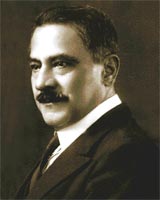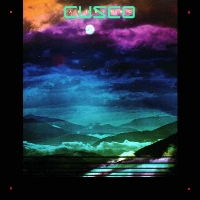Related Research Articles

The music of Bangladesh spans a wide variety of styles. Bangladesh claims some of the most renowned singers, composers and producers in Asia. Music has served the purpose of documenting the lives of the people and was widely patronized by the rulers. It comprises a long tradition of religious and regular song-writing over a period of almost a millennium.

Andean music is a group of styles of music from the Andes region in South America.
The music of Ecuador is a diverse aspect of Ecuadorian culture. Ecuadorian music ranges from indigenous styles such as pasillo to Afro-Ecuadorian styles like bomba to modern indie rock like "Cambio de Tonalidad" by Da Pawn.
Chilean music refers to all kinds of music developed in Chile, or by Chileans in other countries, from the arrival of the Spanish conquistadors to the modern day. It also includes the native pre-Columbian music from what is today Chilean territory.
Peruvian music is an amalgamation of sounds and styles drawing on Peru's Andean, Spanish, and African roots. Andean influences can perhaps be best heard in wind instruments and the shape of the melodies, while the African influences can be heard in the rhythm and percussion instruments, and European influences can be heard in the harmonies and stringed instruments. Pre-Columbian Andean music was played on drums and string instruments, like the European pipe and tabor tradition. Andean tritonic and pentatonic scales were elaborated during the colonial period into hexatonic, and in some cases, diatonic scales.
Sevdalinka, also known as Sevdah music, is a traditional genre of folk music originating in Bosnia and Herzegovina. Sevdalinka is an integral part of the Bosniak culture, but is also spread across the ex-Yugoslav region, including Croatia, Montenegro, North Macedonia and Serbia. The actual composers of many Sevdalinka songs are unknown because these are traditional folk songs.

Huayno is a genre of popular Andean music and dance. It is especially common in Peru, Western Bolivia, Northern Argentina and Northern Chile, and is practiced by a variety of ethnic groups, especially the Quechua people. The history of Huayno dates back to colonial Peru as a combination of traditional rural folk music and popular urban dance music. High-pitched vocals are accompanied by a variety of instruments, including quena (flute), harp, siku (panpipe), accordion, saxophone, charango, lute, violin, guitar, and mandolin. Some elements of huayno originate in the music of the pre-Columbian Andes, especially on the territory of the former Inca Empire. Huayno utilizes a distinctive rhythm in which the first beat is stressed and followed by two short beats.
Música criolla, creole music or canción criolla is a varied genre of Peruvian music that exhibits influences from European, African and Andean music. The genre's name reflects the coastal culture of Peru, and the local evolution of the term criollo, a word originally denoting high-status people of full Spanish ancestry, into a more socially inclusive element of the nation.

El cóndor pasa is a Peruvian zarzuela whose music was composed by Peruvian songwriter Daniel Alomía Robles in 1913 with a script written by Julio de La Paz. This zarzuela is written in prose and consists of one musical play and two acts.

Siku is a traditional Andean panpipe. This instrument is the main instrument used in a musical genre known as sikuri. It is traditionally found all across the Andes but is more typically associated with music from the Kollasuyo, or Aymara speaking regions around Lake Titicaca. Historically because of the complicated mountain geography of the region, and due to other factors, in some regions each community would develop its own type of siku, with its own special tuning, shape and size. Additionally each community developed its own style of playing. Today the siku has been standardized to fit in with modern western forms of music and has been transported from its traditional roots.
Q'ero is a Quechua-speaking community or ethnic group dwelling in the province of Paucartambo, in the Cusco Region of Peru.

Harawi - Chant d'amour et de mort are a song cycle for "grand, dramatic" soprano and piano whose music and libretto were composed by Olivier Messiaen in 1945. They are considered to be the first part of his Tristan trilogy, a collection of works inspired by the myth of Tristan and Iseult.

Daniel Alomía Robles was a Peruvian composer and ethnomusicologist. He is best known for composing the song "El Cóndor Pasa" in 1913 as part of a zarzuela — a musical play that alternates between spoken and sung parts — of the same name. This song was based on Andean folk songs and is possibly the best known Peruvian song, partly due to the worldwide success that the melody obtained when it was used by Simon & Garfunkel as their music for "El Cóndor Pasa ", although that song has different lyrics.

Apurimac is an album by the German Andean new age band Cusco. Though their sound has certainly matured over the years, this was the breakout album by the band, garnering their first major international success with its release on the Higher Octave music label.

"Duncan" is a song by the American singer-songwriter Paul Simon. It was the third and final single from his second self-titled studio album (1972), released on Columbia Records in July 1972 backed with "Run That Body Down".
Hmong music is an important part of the culture of the Hmong people, an ethnic group from southeast Asia. Because the Hmong language is tonal, there is a close connection between Hmong music and the spoken language. Music is an important part of Hmong life, played for entertainment, for welcoming guests, and at weddings and funerals. Hmong musical instruments includes flutes such as the dra, leaves also called nblaw, two-string vertical fiddle, and the qeej or gaeng, a type of mouth organ.
Peruvian cumbia is a subgenre of chicha that became popular in the coastal cities of Peru, mainly in Lima in the 1960s through the fusion of local versions of the original Colombian genre, traditional highland huayno, and rock music, particularly surf rock and psychedelic rock. The term chicha is more frequently used for the pre-1990s variations of the subgenre.

"Red Dragonfly" is a famous Japanese children's song (dōyō) composed by Kōsaku Yamada in 1927, with lyrics from a 1921 poem by Rofū Miki. It is a nostalgic depiction of a Japanese red dragonfly seen at sunset by an infant being carried on an older sister's shoulder.

Maithili Music is one of the most ancient types of music in the Indian subcontinent. It originated from Mithila, a geographical and cultural region of the Indian subcontinent bounded by the Mahananda River in the east, the Ganges in the south, the Gandaki River in the west and by the foothills of the Himalayas in the north. It comprises certain parts of Bihar and Jharkhand of India and adjoining districts of the eastern Terai of Nepal. No one knows exactly when Maithili Music came into existence, probably due to the length of its history, but its age indicates that it might have helped other music develop and flourish in India and Nepal.It is believed that many new types of music forms have been sprouted from Maithili music as it is believed to be the oldest form of music is South Asia. Maithili music are played during a variety of ritual occasions, and it is believed that some of the most melodic music among them. The music was generally based on the daily life of a common man which made it relatable to the audience and hence accepted on mass. Although Maithili music is usually played by classical instruments, it has been modernized and now uses various modern instruments. Some significant contributors to this music style are Maha Kavi Vidyapati Thakur, Udit Narayan Jha, Sharda Sinha, Kunj Bihari Mishra, Haridwar Prasad Khandelwal, Dr. Shanti Jain, Rajni Pallavi, Poonam Mishra, Ranjana Jha, Moni 'Vaidehi' and many more.
A Sanjuanito, Sanjuan, or San Juan is a type of Ecuadorian music and dance. Sanjuanitos are an indigenous form of music and folkloric dance associated with the Sierra, Ecuador's mountainous Andean region. It's associated with, but not specific to, the Otavalo people.